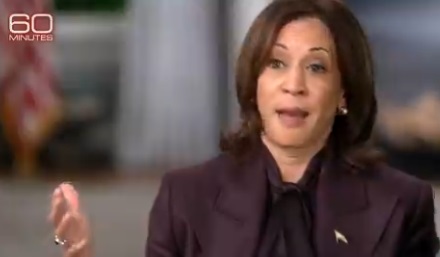News
UPDATE: Beaumont RCMP solve suspicious incident

UPDATED SEPT. 19, 2017 Beaumont, Alberta – Beaumont RCMP have determined that the male described in the September 13 incident was an RCMP officer and there is no risk to the public. The RCMP member was in an unmarked police vehicle, and not in uniform.
No offence was committed and further information will not be provided by the RCMP on this incident.
_______________________________________________________________________________________________________
ORIGINAL ARTICLE from Sept. 15 Beaumont, Alberta – Beaumont RCMP are investigating a suspicious occurrence which was reported on September 13, 2017. While walking to school, a 13-year-old male and 14-year-old female had an unusual verbal exchange with a male who presented himself as an ‘officer’.
At approximately 8:30 a.m. on September 13, a male in a parked, newer, black coloured SUV with tinted windows, called two school children over and talked to them. The male said he was an ‘officer’ and asked questions which were probing and concerning. At no time did the male make any physical contact, or ask the children to come into the vehicle. After talking for a few minutes, the unidentified male drove away.
The male was not dressed in any clothing which would indicate any sort of a police, or ‘officer’ uniform.
The RCMP were advised of this incident later that day at 6:00 p.m., and began actively investigating. Neighbourhood inquiries have been conducted to determine if anyone was witness to this exchange and patrols made to identify a vehicle. The investigation continues.
The male is described as:
– Caucasian with dark complexion
– Approximate age – mid 40s
– Green eyes, dark hair with receding hair line
– Scarred face
– Wearing a dark coloured golf type shirt
A composite sketch has been completed and is attached to this release.
“Although no one was injured, an exchange like this is alarming, and we want these incidents reported to the RCMP right away” said Staff Sergeant Jeff Egan, Beaumont RCMP Detachment Commander. “Parents are encouraged to continue to have discussions with their children about practicing street safety, and trusting their instincts when it comes to strangers. Reporting strange events is paramount to our solving them.”
The RCMP are asking anyone with information to contact them. The male involved in this incident is encouraged to contact the Beaumont RCMP in an effort to explain his actions and clear this investigation.
If you have information about this investigation, please call the Beaumont RCMP at 780-929-7410 or call your local police detachment. If you want to remain anonymous, you can contact Crime Stoppers by phone at 1-800-222-8477 (TIPS), by internet at www.tipsubmit.com, or by SMS.
Media
CBC journalist quits, accuses outlet of anti-Conservative bias and censorship

From LifeSiteNews
Travis Dhanraj accused CBC of pushing a ‘radical political agenda,’ and his lawyer said that the network opposed him hosting ‘Conservative voices’ on his show.
CBC journalist Travis Dhanraj has resigned from his position, while accusing the outlet of anti-Conservative bias and ”performative diversity.”
In a July 7 letter sent to colleagues and obtained by various media outlets, Travis Dhanraj announced his departure from the Canadian Broadcasting Corporation (CBC) due to concerns over censorship.
“I am stepping down not by choice, but because the Canadian Broadcasting Corporation has made it impossible for me to continue my work with integrity,” he wrote.
“After years of service — most recently as the host of Canada Tonight: With Travis Dhanraj — I have been systematically sidelined, retaliated against, and denied the editorial access and institutional support necessary to fulfill my public service role,” he declared.
Dhanraj, who worked as a CBC host and reporter for nearly a decade, revealed that the outlet perpetuated a toxic work environment, where speaking out against the approved narrative led to severe consequences.
Dhanraj accused CBC of having a “radical political agenda” that stifled fair reporting. Additionally, his lawyer, Kathryn Marshall, revealed that CBC disapproved of him booking “Conservative voices” on his show.
While CBC hails itself as a leader in “diversity” and supporting minority groups, according to Dhanraj, it’s all a facade.
“What happens behind the scenes at CBC too often contradicts what’s shown to the public,” he revealed.
In April 2024, Dhanraj, then host of CBC’s Canada Tonight, posted on X that his show had requested an interview with then-CBC President Catherine Tait to discuss new federal budget funding for the public broadcaster, but she declined.
At a time when the public broadcaster is under increasing scrutiny and when transparency is needed, #CanadaTonight requested an intvu w/ @PresidentCBCRC Catherine Tait. We wanted to discuss new budget funding, what it means for jobs & the corporation’s strategic priorities ahead.…
— Travis Dhanraj (@Travisdhanraj) April 19, 2024
“Internal booking and editorial protocols were weaponized to create structural barriers for some while empowering others—particularly a small circle of senior Ottawa-based journalists,” he explained.
According to Marshall, CBC launched an investigation into the X post, viewing it as critical of Tait’s decision to defend executive bonuses while the broadcaster was cutting frontline jobs. Dhanraj was also taken off air for a time.
Dhanraj revealed that in July 2024 he was “presented with (a non-disclosure agreement) tied to an investigation about a tweet about then CBC President Catherine Tait. It was designed not to protect privacy, but to sign away my voice. When I refused, I was further marginalized.”
Following the release of his letter, Dhanraj published a link on X to a Google form to gather support from Canadians.
“When the time is right, I’ll pull the curtain back,” he wrote on the form. “I’ll share everything…. I’ll tell you what is really happening inside the walls of your CBC.”
Click here to read a note directly from me:https://t.co/FYncgnOZ1E pic.twitter.com/OFaLi2OGkn
— Travis Dhanraj (@Travisdhanraj) July 7, 2025
CBC has issued a statement denying Dhanraj’s claims, with CBC spokesperson Kerry Kelly stating that the Crown corporation “categorically rejects” his statement.
This is hardly the first time that CBC has been accused of editorial bias. Notably, the outlet receives the vast majority of its funding from the Liberal government.
This January, the watchdog for the CBC ruled that the state-funded outlet expressed a “blatant lack of balance” in its covering of a Catholic school trustee who opposed the LGBT agenda being foisted on children.
There have also been multiple instances of the outlet pushing what appears to be ideological content, including the creation of pro-LGBT material for kids, tacitly endorsing the gender mutilation of children, promoting euthanasia, and even seeming to justify the burning of mostly Catholic churches throughout the country.
International
CBS settles with Trump over doctored 60 Minutes Harris interview

CBS will pay Donald Trump more than $30 million to settle a lawsuit over a 2024 60 Minutes interview with Kamala Harris. The deal also includes a new rule requiring unedited transcripts of future candidate interviews.
Key Details:
- Trump will receive $16 million immediately to cover legal costs, with remaining funds earmarked for pro-conservative messaging and future causes, including his presidential library.
- CBS agreed to release full, unedited transcripts of all future presidential candidate interviews—a policy insiders are calling the “Trump Rule.”
- Trump’s lawsuit accused CBS of deceptively editing a 60 Minutes interview with Harris in 2024 to protect her ahead of the election; the FCC later obtained the full transcript after a complaint was filed.
Tonight, on a 60 Minutes election special, Vice President Kamala Harris shares her plan to strengthen the economy by investing in small businesses and the middle class. Bill Whitaker asks how she’ll fund it and get it through Congress. https://t.co/3Kyw3hgBzr pic.twitter.com/HdAmz0Zpxa
— 60 Minutes (@60Minutes) October 7, 2024
Diving Deeper:
CBS and Paramount Global have agreed to pay President Donald Trump more than $30 million to settle a lawsuit over a 2024 60 Minutes interview with then–Vice President Kamala Harris, Fox News Digital reported Tuesday. Trump accused the network of election interference, saying CBS selectively edited Harris to shield her from backlash in the final stretch of the campaign.
The settlement includes a $16 million upfront payment to cover legal expenses and other discretionary uses, including funding for Trump’s future presidential library. Additional funds—expected to push the total package well above $30 million—will support conservative-aligned messaging such as advertisements and public service announcements.
As part of the deal, CBS also agreed to a new editorial policy mandating the public release of full, unedited transcripts of any future interviews with presidential candidates. The internal nickname for the new rule is reportedly the “Trump Rule.”
Trump initially sought $20 billion in damages, citing a Face the Nation preview that aired Harris’s rambling response to a question about Israeli Prime Minister Benjamin Netanyahu. That portion of the interview was widely mocked. A more polished answer was aired separately during a primetime 60 Minutes special, prompting allegations that CBS intentionally split Harris’s answer to minimize political fallout.
The FCC later ordered CBS to release the full transcript and raw footage after a complaint was filed. The materials confirmed that both versions came from the same response—cut in half across different broadcasts.
CBS denied wrongdoing but the fallout rocked the network. 60 Minutes executive producer Bill Owens resigned in April after losing control over editorial decisions. CBS News President Wendy McMahon also stepped down in May, saying the company’s direction no longer aligned with her own.
Several CBS veterans strongly opposed any settlement. “The unanimous view at 60 Minutes is that there should be no settlement, and no money paid, because the lawsuit is complete bulls***,” one producer told Fox News Digital. Correspondent Scott Pelley had warned that settling would be “very damaging” to the network’s reputation.
The final agreement includes no admission of guilt and no direct personal payment to Trump—but it locks in a substantial cash payout and forces a new standard for transparency in how networks handle presidential interviews.
-

 Fraser Institute1 day ago
Fraser Institute1 day agoBefore Trudeau average annual immigration was 617,800. Under Trudeau number skyrocketted to 1.4 million annually
-

 MAiD2 days ago
MAiD2 days agoCanada’s euthanasia regime is already killing the disabled. It’s about to get worse
-

 Frontier Centre for Public Policy1 day ago
Frontier Centre for Public Policy1 day agoNew Book Warns The Decline In Marriage Comes At A High Cost
-

 Business2 days ago
Business2 days agoPrime minister can make good on campaign promise by reforming Canada Health Act
-

 Addictions1 day ago
Addictions1 day ago‘Over and over until they die’: Drug crisis pushes first responders to the brink
-

 International2 days ago
International2 days agoChicago suburb purchases childhood home of Pope Leo XIV
-

 Daily Caller1 day ago
Daily Caller1 day agoUSAID Quietly Sent Thousands Of Viruses To Chinese Military-Linked Biolab
-

 Energy1 day ago
Energy1 day agoLNG Export Marks Beginning Of Canadian Energy Independence



